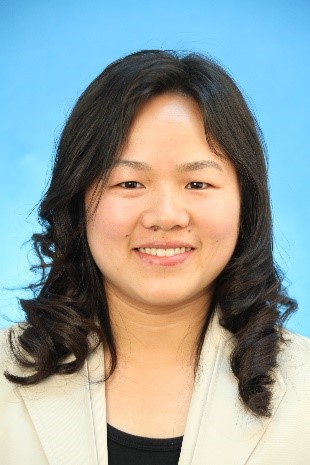Haiyan Li
Effects of Bioglass on Endothelial Cells and Fibroblasts Promote Wound Healing
Haiyan Li1, Hongfei Yu1, Collin Green2, Jiang Chang1, 3
1 Med-X Research Institute, School of Biomedical Engineering, Shanghai Jiao Tong University
2 Faculty of Medical and Health Sciences, School of Medicine, the University of Auckland
3 Shanghai Institute of Ceramics, Chinese Academy of Sciences
 Bioglass (BG) has shown application potential in wound healing due to its excellent antibacterial effects. Here, we proposed that the BG may accelerate wound healing through affecting behaviors of cells involved in skin regeneration. After we investigated the effects of BG ion extracts on behaviors of human umbilical vein endothelial cells (HUVECs) and human dermal fibroblasts (HDF) in vitro, we found that BG ionic products with certain concentrations stimulated migration of HUVECs and HDFs, collagen expression and myofibroblast differentiation of HDFs and expressions of vascular endothelial growth factor, basic fibroblast growth factor as well as their receptors from both of cells. In addition, BG ionic extracts prevented death of HUVECs following hypoxia through blocking hemichannel opening while gap junctional communications and vascular endothelial cadherin in HUVECs treated with certain BG ion extracts were enhanced, indicating the stimulatory effects of BG on communications between HUVECs. Application of BG directly on full thickness wound of rat accelerated wound closure through stimulating vascularization and reducing inflammation response in wound site. Therefore, BG ionic products had strong effects on behaviors of ECs and fibroblasts, which could finally promote wound healing, indicating that BG has great application potential in wound healing.
Bioglass (BG) has shown application potential in wound healing due to its excellent antibacterial effects. Here, we proposed that the BG may accelerate wound healing through affecting behaviors of cells involved in skin regeneration. After we investigated the effects of BG ion extracts on behaviors of human umbilical vein endothelial cells (HUVECs) and human dermal fibroblasts (HDF) in vitro, we found that BG ionic products with certain concentrations stimulated migration of HUVECs and HDFs, collagen expression and myofibroblast differentiation of HDFs and expressions of vascular endothelial growth factor, basic fibroblast growth factor as well as their receptors from both of cells. In addition, BG ionic extracts prevented death of HUVECs following hypoxia through blocking hemichannel opening while gap junctional communications and vascular endothelial cadherin in HUVECs treated with certain BG ion extracts were enhanced, indicating the stimulatory effects of BG on communications between HUVECs. Application of BG directly on full thickness wound of rat accelerated wound closure through stimulating vascularization and reducing inflammation response in wound site. Therefore, BG ionic products had strong effects on behaviors of ECs and fibroblasts, which could finally promote wound healing, indicating that BG has great application potential in wound healing.